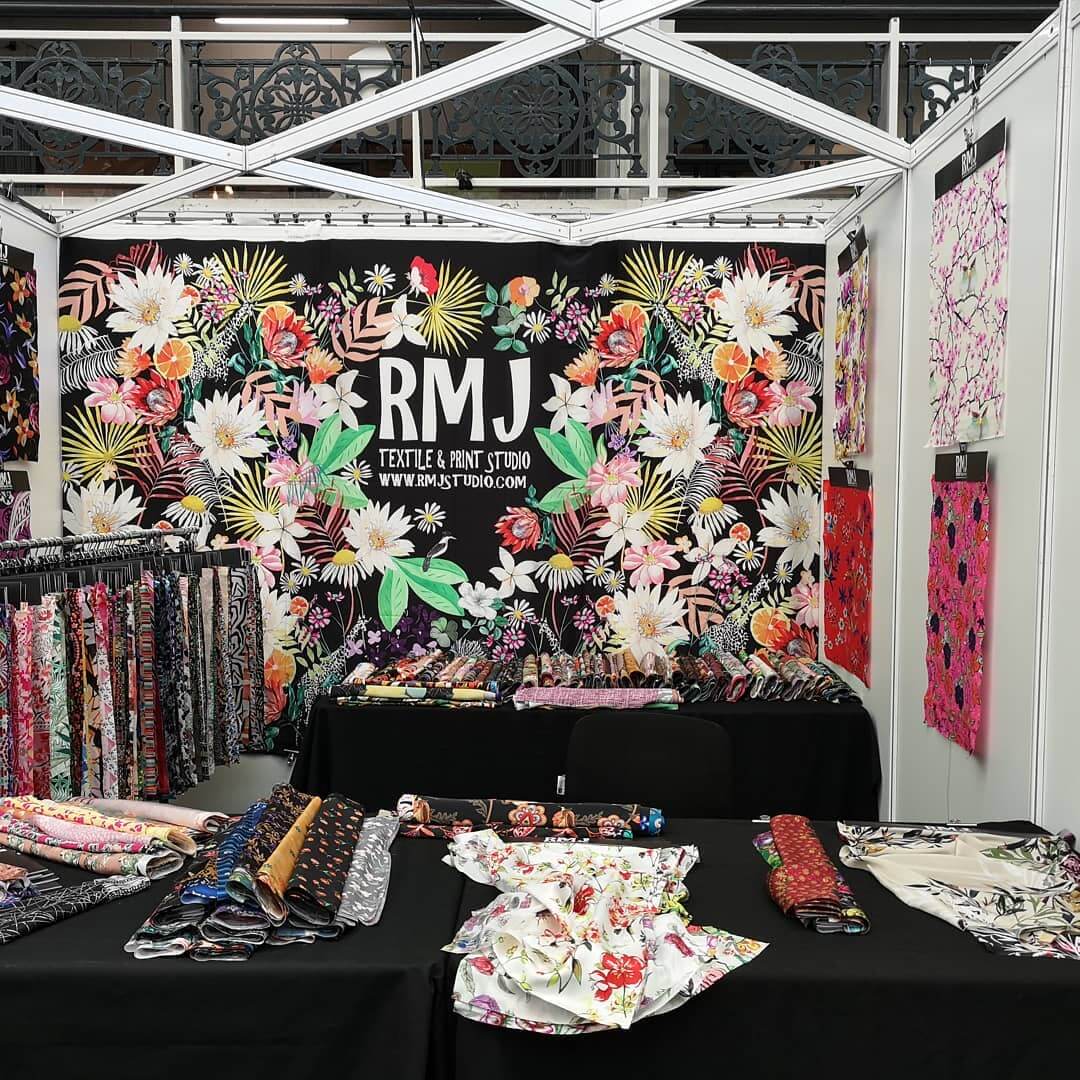
The customisation trend is paving the way for local print design artists to make a living off their talent in the UK. Previously, it had been difficult for print designers in a world where fast-fashion and brands run the textile industry. However, the rise of new technologies, including digital textile printers and the growth of ecommerce platforms has meant that now more power has been handed back to the individual designer
RMJ Textile & Print Studio is a UK-based print design studio that was set up three years ago by Roseanna Jiggins. Based in Pembrokeshire in west Wales, the company creates print designs for apparel and interiors. It hires freelancers and artists that are all based locally and that were trained at the University of Wales Trinity Saint David (UWTSD), as well as Royal College of Art and Chelsea College of Arts, both based in London.
Jiggins says: “In a low job area it was great to set up a design-based business using local talented artists who have worked in the surface pattern world for many years.
“It has been a real learning curve setting up a print design studio in such a competitive market. We primarily target the fashion market including juniors, contemporary, sleepwear and swimwear.” The company also sells to interior and lifestyle companies.
Its clients are based worldwide, with exports forming the main part of the business. “We look to investigate colour, taste and worldwide economics as part of our design process,” says Jiggins. With Brexit providing uncertainty across UK markets, the company is finding the domestic market troublesome. She says: “We sell to the UK market, but feel we hit at a time when there is a lot of uncertainty and budgets are tight. Slowly we are gaining client trust as we look to offer designs which are not just based on trend, but sympathetically try to understand the sensory emotions of buyers and look to use this within our artwork.”
As RMJ Studio is a relatively new studio, it currently outsources all of its digital printing needs. However, the company still screen prints and silk paints in-house. Jiggins hopes to change this and invest in digital capabilities in the future as the printers continuously evolve. “We hope to purchase a printer capable of printing onto organic fabric swatches,” says Jiggins. “For now, we print mainly on silks and use acid, reactive and disperse dyes, but are continuously researching printers which are becoming more environmentally respectful.”
Expanding the digital market
Despite digital textile printing growing, with global digital textile printing capacity rising by 23% last year (2018), according to WTiN Intelligence: Digital Textiles, for Jiggins, “the digital market still feels underutilised.” She adds: “Mass production still uses rotary and screen, which limits the quality of final design output. Maybe this doesn’t matter in such a fast-moving environment but given the current mood of fast-fashion I am certain that the customer will increasingly be looking for quality above quantity and a more bespoke element to dressing.”
Current trends such as customisation and increased demand for quality is propelling the adoption of digital textile printing. This is because, according to Jiggins, it can “offer a more structured approach to print.” For example, the print-on-demand (POD) business model creates much less waste, she adds.
Despite this, and the fact that more and more digital textile printers are entering the market, investment costs remain high. Jiggins notes that costs are slowly falling, however some traditional printers, who are used to the low prices of screen printing for the fast-fashion and home textiles markets, are still priced out.
Another issue, Jiggins adds, is that she feels there is a ‘lack of choice in fabrics’ and with climate change high on the agenda, “suppliers should look to offer a more organic range,” she continues.
With the company not owning a digital textile printer itself, problems can be created around designer expectations and reality. Jiggins says: “One concern I have with digital printers is the actual knowledge and experience they have, as a swatch creator it is vitally important that the designs are shown at their best, but we often have to bow to the printer who often has the last say in quality. The paper version is always beautiful, but the quality is sometimes compromised as a digital print and you don’t have lots of chances to get it right. Whether the final design ends up losing its beauty in the process as it goes to mass production, we only have one chance to ‘wow’ so finding a good printer is a difficult task.”
However, with digital textile printing it is generally easier than screen printing to recreate what is designed in the software as reliability is higher, and importantly, samples can be created to check how close to the design the print actually is, and whether something needs adjusting.
Jiggins notes: “Digital printing is a great way to achieve more complex designs and colours, but at the end of the day, sometimes the consumer wants a print that is simple and beautiful” and this can be cheaper with screen printing, if the volume demand is there.
She adds that creating a design that looks good on the customer, but also striking enough to sell online, can be difficult. Digital textile printing though, allows companies to experiment with this. “It’s really interesting watching retailers accomplish this. It’s also fascinating that online companies are now opening stores [such as Missguided]. There is a definite confusion out there at the moment, with who buys what, where and with a move towards seasonless design,” she says. And seasonless design is in some way enabled by the flexibility that digital textile printing provides.
RMJ Studio is seeking to use more UK manufacturers for all of its studio needs, as digital textile printing in the UK continues to gain traction, but cost is still an issue. “We do have to weigh this up with our budget,” Jiggins says.
Have your say. Join the conversation and follow us on LinkedIn







